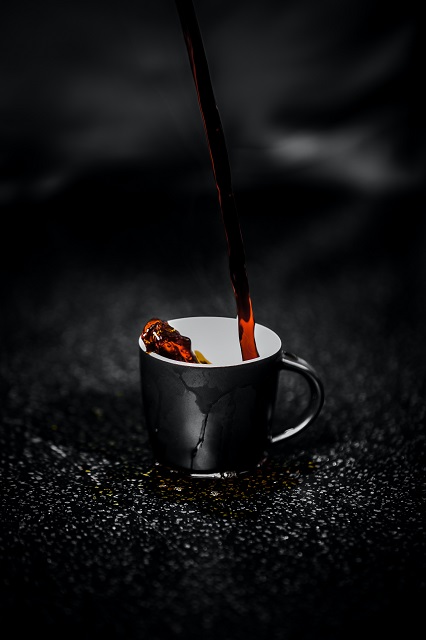Posted: Dec 09, 2022

Coffee and wine culture are powerful enough that some center their personality around them. Spunky adages like "Don't talk to me until I've had my coffee" and "I'm like wine, I just get better with age" are around for a reason." The fact that a "coffee-lover" archetype exists illustrates just how zealous real-life coffee fans can be. Picture a sweater-wearing java sipper in an exposed-brick cafe — one hand wrapped around a steaming mug, the other holding a Rimbaud anthology. The same cartoonish ideation is true of wine fans: Imagine a high-cheekboned fop limply swirling a long-stemmed glass of Lambrusco, and you begin to get the picture. To devoted fans, coffee and wine are more than just beverages.
The sommelier's world stretches far beyond just red wine and white wine; there are rosés, orange wines, sparkling wines, natural wines, and more. According to the International Organisation of Vine & Wine via Decanter, U.S. wine fans collectively enjoyed 3.31 billion liters in 2021.
In the same way, light and dark roasts are just the tip of the iceberg when it comes to coffee. This year, the New York Post reported that most American coffee fans savor two cups every day. There are Arabicas, Brazils, Ethiopias, Colombias, and more — and just like wine, each different coffee features idiosyncratic differences, from nuanced to distinct. It's perhaps fitting, then, that the process of tasting coffee is similar to how you taste wine.
The same basic structure and lexicon
The coffee-tasting lexicon is nearly indistinguishable from a sommelier's. Per Wine Enthusiast, descriptors like "fruit," "floral," "herbal," and "spice" are all common wine descriptors. Similarly, Prima Coffee encourages java sippers to taste for fruitiness, sweetness, acidity, and bitterness.
Both coffee-tasting and wine-tasting start with the nose. When tasting coffee Bean Box says to smell the beans before and after grinding, again after the grounds are bloomed with water, and once more before taking the first sip. (It's a lot of sniffing.) For tasting wine, The Spruce Eats says to swirl your glass for 10-12 seconds and gently inhale twice — first sharply, then deeply, nose nearly entering the mouth of the glass. Swirling coats the inside of the glass and introduces oxygen into the wine, which Food & Wine explains makes it easier to inhale its aromas.
By Autumn Swiers
Source and Complete Article: tastingtable.com
Date: December 9, 2022
Go-Wine's mission is to organize food and beverage information and make it universally accessible and beneficial. These are the benefits of sharing your article in Go-Wine.com


The Wine Thief Bistro & Specialty Wines is a locally owned small business in downtown Frankfort, IL offering world class wines in a relaxed, casual gathering spot for friends and family. Offering world class virtual tastings and touchless carryout.
https://www.twtwineclub.com/aboutus
Go-Wine 25 Great Wineries in US selection prioritizes quality, value and availability.
www.go-wine.com/great-wineries-in-america
Tasting wine is a nice experience, but visiting the places in which wine is made is a magic moment. Available in New York City for touchless pickup.